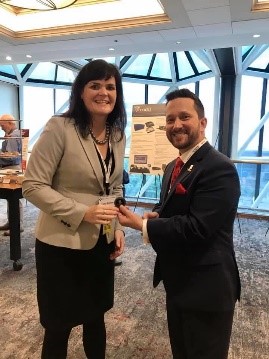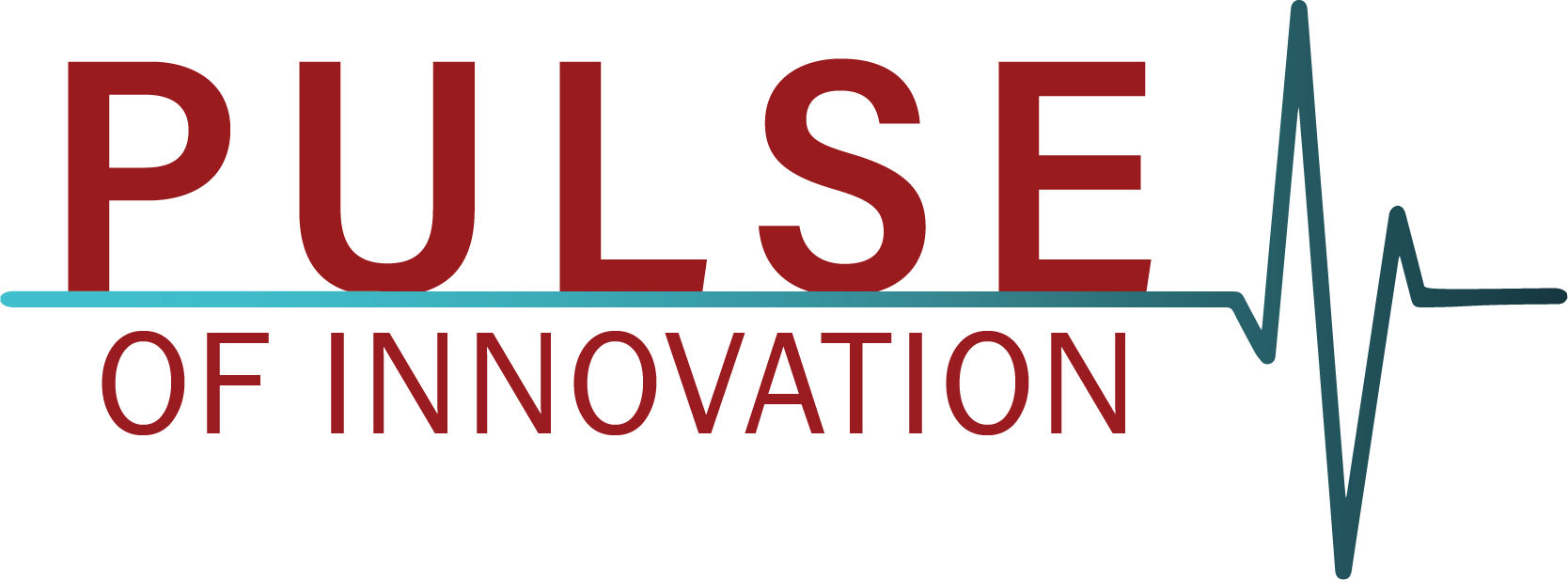

June 2020
MTEC presents the latest newsletter for our reading audience with an acknowledgment that this comes slightly later than scheduled. With the urgent demand to make over 23 awards related to three COVID-19 Requests for Project Proposals (RPPs), we had little time remaining to put together the newsletter. Please accept our apologies for the delay; we believe this issue includes valuable information for our readers. If you have any questions related to the information below, do not hesitate to reach out to us.
5TH ANNUAL MEMBERSHIP MEETING
Houston, TX
It seems hard to believe that the MTEC annual membership meeting was only a few months ago in Houston. Thank you to Houston Methodist for hosting and to the participants for making the effort to attend. We are very thankful that we were able to hold the meeting prior to the COVID-19 related shutdown. We hope the meeting was valuable for our attendees (members, military, and presenters), and the MTEC team is eager to hear any additional feedback you may have.
A few of the meeting’s highlights are listed below:
Jeremiah Pauley from the Wounded Warrior Project (pictured with Kathy Zolman, MTEC Director of Program Operations) kicked off the meeting with an emotional reflection on his own journey from childhood to injured soldier to recovery. Unfortunately, while serving in Iraq, he sustained a traumatic injury—both physiological and psychological wounds. Though Jeremiah found wholeness through military medicine, the Wounded Warrior Project outreach, and his own strong determination, it was an inspiring talk, demonstrating the need for many of the technologies that are being advanced through MTEC. It set a strong tone for the purpose of the MTEC and the goals of military R&D. We thank him for his service to the nation and for sharing his story with all of us.
Ms. Dawn Rosarius (Principal Assistant for Acquisition) and Dr. Jonathan Miller (Deputy Principal Assistant for Research and Technology) at USAMRDC discussed the changes that are occurring in military battlefield planning and how these changes affect the medical needs of the future. This led to specific examples of new areas of research that are urgently needed to prepare the force and the medical response to meet the challenges ahead.
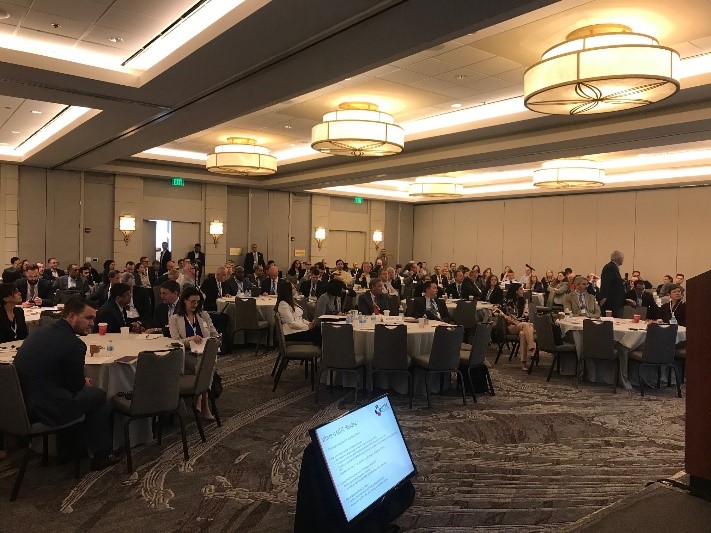
The second day of the meeting concentrated on general MTEC business practices with a focus on operations and methods, including information that might be pertinent to member product development plans. A joint military and MTEC panel discussed “lessons learned” from the past year, citing examples of changes that have been made to better accommodate MTEC’s practices. MTEC Chief Operating Officer (COO), Mr. Bill Howell then conducted an open discussion with the attending membership regarding areas of future and expected improvements.
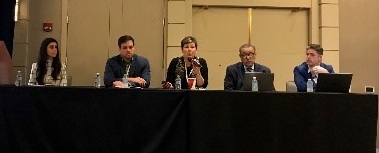
The MTEC annual membership meeting provides many opportunities for all members. These include:
- Direct contact and dialog with the military to help members understand what sort of clinical improvements our sponsors are seeking, while giving members an opportunity to speak face-to-face with them to align their own capabilities.
- Provides information about MTEC practices and processes that can assist members in better understanding how to submit proposals in a way that increases their chances of acceptable ratings and awards.
- Sponsors teaming among members so better proposals with higher likelihood of acceptance can be submitted in response to solicitations.
- Provides further information on topics chosen by the members to assist them in their product development.
- Provides a forum for your feedback and interaction regarding how things are run, giving you an opportunity to influence the manner in which MTEC conducts business. Your input is always desired. Many changes have been implemented based on member suggestions.
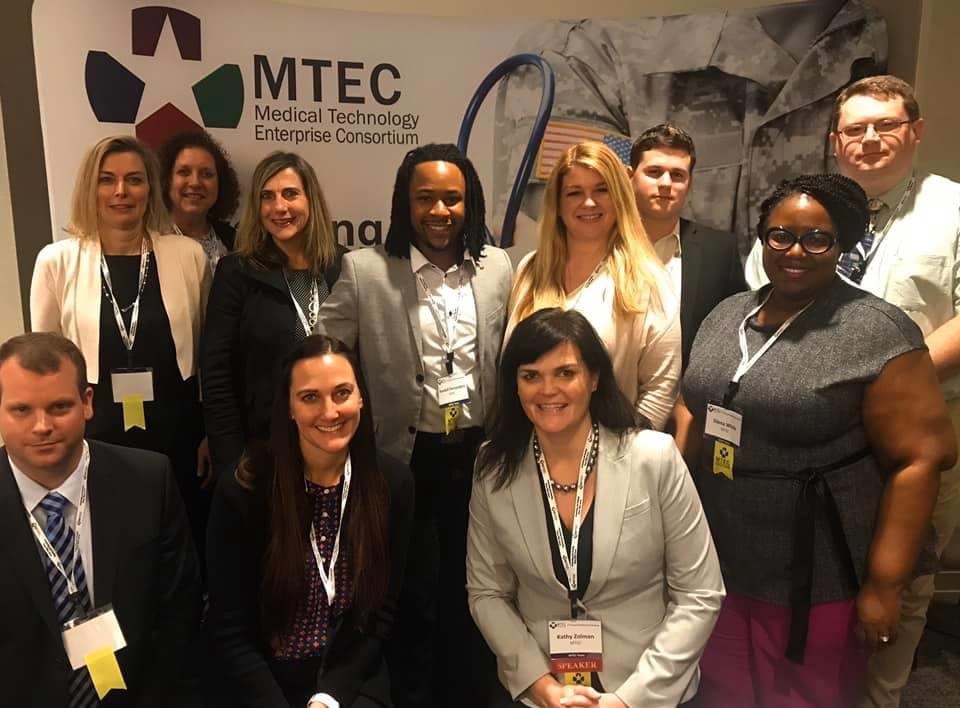
Next year’s event is scheduled for early March in Los Angeles, to be hosted by the Cedar Sinai Medical Center. MTEC attempts to move the meetings around the US to engage our regional members as best as possible. More details will be shared in emails and subsequent newsletters. We hope to see you again next year in sunny California.
Info: Kathy Zolman, Director of Program Operations, [email protected], 843-760-4349
COVID-19 RESPONSES
We hardly need to state how the coronavirus has had a huge impact on the world and America in particular. Hospitals filling with patients, infections and deaths mounting, schools and businesses closed. It has touched us all in ways many of us could never imagine. Yet here we are. Even the military is not outside of the fray, as the papers headlined the outbreak and consequences aboard the USS THEODORE ROOSEVELT. Though not a part of the daily statistics, the military—with its close working environment—is equally susceptible to this infectious disease and needs solutions quickly.
MTEC was called upon to work with the military to award COVID-19 projects in several areas: therapeutic drug against the disease, diagnostic sensors to identify and monitor potentially infected individuals and development of a tele-critical care infrastructure to support non-medical center organizations response capabilities. In order to speed the process and ensure technologies developed are relevant to the ongoing pandemic, we modified our procedures to provide sufficient technology solutions. In an effort to shorten the overall timeline for awards, we (military and MTEC) wanted the solutions to have an impact before the end of the calendar year.
This started with several pre-announcements to prepare the technology providers—emails, website sliders, and outreach through other associations were used to announce our intent. The MTEC employed a two-stage enhanced white paper (EWP) submission process. The first step was a means to ensure sufficient technological maturity, COVID-19 experience, and alignment to military target technologies. This led to an initial down-select decision by the military funding sponsors. In view of the very large numbers of submissions we received for each solicitation (over 70 per topic area), the need to expedite review and selection becomes understandable. The EWPs that satisfied the initial screening were then reviewed in their entirety, and final award selections were made. In all cases, multiple offerors were selected and a pipeline of potential technologies would be pursued with the hope that at least one will be successful in reaching Emergency Use Authorization (EUA) this year. As tensions in the world grow because of the impacts of the virus, as well as geopolitical factors, the military needs a means to project forces across the world, and speed and quality had to be accommodated in the effort.
At the time of this article, the MTEC is in the midst of awarding contracts for the therapeutic and is conducting cost analysis on down selected tele-medicine and diagnostic proposals. We anticipate that more than 20 awards will be made with an initial dollar value above $50 million. Our goal was 5-6 weeks from solicitation to award; we will miss this target, but not by much. The overall size of the effort-especially given the number of papers requiring evaluation-took us and the military by surprise. Thank goodness the technology providers were prepared and responded! We have heard nothing but praise from the military for the proposals that will be funded. Regardless, we certainly feel we have provided an expedited means that will be highly supportive of the military’s response timeframe.
With this, I want to thank the members for their responsiveness and their interest in the new projects. Without your attention, response, and technical capabilities, we could not have met the military’s expectations. We offer our sincere thanks and hope that you are successful in providing the needed capabilities.
Let me finish with a short lesson learned: Once more the MTEC demonstrated an ability to tailor our processes to the need. In this instance, we modified tried and true procedures to better facilitate the ease of review while expediting the timeframe. We believe we found a means to best meet military needs without sacrificing members’ ability to propose. Once this effort is finished, we will review and identify lessons learned for procedural adaptation in the future. The MTEC will share these lessons learned in future newsletters and present them at our March 2021 General Membership Meeting in Los Angeles.
Info: Bill Howell, Chief Operating Officer, 843-345-6864, [email protected]
2020 SOLICITATION HISTORY
This year started with a bang and is far exceeding what we had planned back in October 2019. To give you some perspective, as the chart shows, we have gone through significant growth during the past two years. This year will be approximately 60% higher than last. We started the 2020 campaign with a potential plan of $80M in research project awards and a conservative weighted plan of $69M. Now, 5 months into our 2020 operating year, the new plan has a $163M potential and $139M weighted funding total spread more than 50 awards. In light of the growth in business both the MTEC and USAMRAA have started to increase staffing to accommodate the awards that will be generated.
First Quarter: Since the start of the calendar year, the MTEC has been working hard on a variety of efforts. The first quarter included over $10M of continuation funding for several projects, which means that efforts on those initiatives are going well. In addition, we awarded contracts worth $5.6M to a team of Design Interactive and Battelle for the JPC-1, a team of Colorado University and Metis Foundation for the JPC-6, and Ischemix for the JPC-6. In total, the first quarter saw an award of more than $15M to MTEC members.
Additionally, we started new solicitations that are in evaluation or cost analysis at this moment. These are listed below.
2020 First Quarter Solicitations |
||
|
Organization |
Topic |
Estimated Monetary Value |
|
Navy Medical Research Center |
Multi-Topic |
$ 17.5M |
|
Navy Medical Research Center |
Blast Exposure Model for Career ArtilleryPersonnel | $ 2M |
|
JPC-1Medical Training, Simulation and Information Services |
Investigating Methods for PerformanceOverdrive (IMPROVE) |
$ 3.6M |
| JPC-8Clinical and Rehabilitative Medicine | Quality Assurance for BiomanufacturedRegenerative Medicine Products |
$16M |
| JPC-2Infectious Disease | Development of Treatment for Covid-19 |
$ 20M |
Second Quarter:
2020 Second Quarter Solicitations |
||
|
Organization |
Topic | Estimated Monetary Value |
|
USAMMDA |
Non-Compressible Hemorrhage Control Technology | $ 1.4M |
|
USAMMDA |
Post-Traumatic Stress Disorder Drug Treatment Adaptive TrialPlatform |
$ 5.3M (total multi-year value approx. $25M) |
| USAMMDA | Interoperable Medical Automation System (iMAS) |
$ 5M |
| TATRC |
National Emergency Telecritical Care Network (Covid-19) |
$ 8M |
| JPC-2 Infectious Disease | Wearable Diagnostic for Detection of Covid-19 Infections |
$ 25M |
The second quarter continues to be one of intensity, with several additional solicitations released. In the upcoming solicitation section, you will see additional efforts that could come to fruition this year. Most of these solicitations will have multiple awards, with the goal of having all of them on contract prior to the end of the fiscal year (if not sooner).
In addition, funds totaling approximately $35M are expected to be placed on award this quarter. Like the first quarter, slightly more than $7M is anticipated for continuing projects that are meeting milestone expectations. An additional $27M is anticipated to be awarded for solicitations that were published in 2019 or earlier, including several submissions from the large 2018 multi-topic, Military Infectious Disease Research Program (MIDRP) multi-topic, US Army Medical Material Development Activity (USAMMDA) Hemorrhage Detection, Walter Reed Army Institute of Research (WRAIR) Combating Anti-Resistance Bacteria (CARB), and the Joint Operations Medical Information System (JOMIS) Theater Blood System.
Beyond these, we hope to close on the COVID-19 awards, either at the end of this month or in early July. This unanticipated extra throughput of $55M will have a significant effect on the end-of-quarter statistics.
As you can see, 2020 will be characterized by a high dollar throughput and high priority projects for the MTEC, providing multiple opportunities for our members to submit and win awards to protect and sustain the military force.
Info: Evan Kellinger; Senior Project Manager, [email protected] or 843-760-4354
UPCOMING SOLICITATIONS
The following solicitations are anticipated before the end of the fiscal year. If you have any questions, please reach out to Dr. Lauren Palestrini for information and details. She can be reached at [email protected].
[supsystic-tables id=7]
MTEC EDUCATIONAL SERIES AND COMPANY PITCH DAY
In the fall of 2019, we surveyed the membership requesting educational and training topics that would be of interest. We received a number of responses-from which we identified 5-6 topics that could be developed and presented. The first of these, “How to Work with the USAMRDC” was conducted in mid-December 2019. We then put together some of the panels at the Annual Membership Meeting to address a few more of the topics, largely related to funding outreach and engineering support services. It was our intent to provide a follow-on to the initial topic describing “How to understand and engage the MTEC solicitation process,” but we were forced to place this effort on hold when we became inundated with solicitations and awards. Our high pace of operations continues today, frequently taking away the very people we want to participate as speakers in this webinar series. So please hold tight, we will get back to it as soon as the current pace of activity permits!
In its place, we want to provide a means for members to get to know each other through a virtual pitch session. As companies look for new opportunities (many described in this newsletter), there may be a need for teams to form to prepare the best possible response. The virtual pitch session provides a means to get both your own company capabilities out for others to notice, and to request the type of services you may be looking for in a partner. The intent is to foster greater interaction and potential teaming relationships. The closing date for requesting pitch time was 8 June. While this date is too late for the active pitch participation, you can still attend the pitch session to hear other presenters as a passive listener. Moreover, we may make this a reoccurring event, depending on member interest. Please get in contact with any of the MTEC folks to participate in a future session. You can listen in to the company pitches on June 25 at 2pm EST.
After this pitch session, we will be looking to add training on the following topics:
- Means and Methods to attract acquisition by large business
- Rules for engaging large businesses to introduce new technology
- Overview of the commercialization process/strategy for planning for success
- Key points to have prepared when approaching investment or venture capital
- University tech transfer; lessons learned.
Between our MTEC board and newly hired outreach personnel, we feel capable of establishing a quality program going forward and will try to bring something to the table every other month.
Info: Dr. Lauren Palestrini, Director of Research Operations, [email protected], 718-619-7570
Rick Satcher, Director Commercialization, [email protected], 919-491-0015
MTEC LESSONS LEARNED
With the time we have spent working solicitations to award, we have identified areas that continue to pop up as confusing and that delay the overall award process. Below you will find a list of things for your attention that can make your proposals better and ease the process for all:
- Offerors should carefully review the requirements in the Proposal Preparation Guide (PPG) and submit all the necessary information. We review all submissions and cost addenda for compliance and often need to reconcile areas not complete or compliant, ultimately delaying the time to award.
- We have a specific issue with cost audits for Clinical Research Organizations (CRO). We struggle to get the information needed to analyze their costs. It’s clear that most CROs do not propose cost by cost element breakouts, but it is important for the government to be able to assess whether these costs are reasonable. If submitting a proposal for CROs, either online pricing lists or historical data is needed to justify the proposed costs. We receive many proposals that are lacking justification for those costs. Our role is to help the government establish that proposal costs are reasonable; therefore, providing justification is extremely important.
- At time of submission offerors must agree to abide by the terms of the MTEC Base Agreement, but we do not assign a formal agreement number until the member receives an actual award. However, the members need to understand this agreement and ask questions so that there are no surprises at the time an award is offered. At the time of award, recipients who do not have existing research project awards under MTEC will receive a final draft of the Base Agreement with a personalized Base Agreement number. Base Agreement negotiations or revisions will be reviewed only at this time; (i.e., if selected for award).
- IP and data rights still cause confusion. Each offeror has the opportunity to assert data rights specific to each project for review and approval by the government. If approved, these data rights will be included in the Research Project Award. If no data rights are asserted, the government will have general purpose rights. Offerors should complete the data rights table at the time of submission to make their intent known and understood early in the process.
- Cost share is a requirement only if the proposal is being submitted by one or more large businesses. However, cost share in excess of what is required, regardless of the offeror’s business status, is encouraged. The military truly desires cost share when the requirement has dual use clinical indications, so please consider and make it a part of your strategy if possible.
Because the OTA methodology allows companies to have far more interaction with each other and the government before proposal submission, a far higher number of acceptable proposals should result. We have observed that some companies are not taking full advantage of these collaboration channels. Here are some observations to help drive you to optimize the flexibility of MTEC OTA vehicle:
- We encourage you to reach out to the points of contact listed in pre-announcements and announcements to help you better understand the technical requirements and determine whether your capabilities offer the best fit. Please read the entire RPP, particularly the sections that describe the required documents for submission and the evaluation criteria. Reach out if you have questions.
- Most of the MTEC solicitations specify a minimum Technology Readiness Level (TRL), and this minimum varies among the solicitations depending on the sponsor and source of funding. We highly encourage offerors to review the TRL definitions so that you can better assess your current status. Please note that you must accomplish all aspects of a TRL to have achieved that TRL. If you need help, feel free to reach out to us so that we can better guide you. Definitions of TRLs can be found here: https://mtec-sc.org/wp-content/uploads/2016/12/TRL-definitions.pdf
- Please reach out to Lauren Palestrini at [email protected] if you need help with teaming for a specific funding opportunity. Although MTEC does not endorse any specific member organization, we are happy to try to connect you with others who have expressed interest in the same funding opportunity. Our awards have shown a strong preference toward teams, rather than individual offerors, to bring forth the strongest technical capabilities together.
Info: Erinbeth Massie, Director of Contracts and Compliance, erinbeth.massie@ati,org, 843-760-3371
Dr. Lauren Palestrini, Director of Research Operations, [email protected], 718-619-7570
COO CORNER: WHERE IS THE MTEC HEADED?
Well, I think if you have been paying attention to this year’s operations, you will certainly see that we have had another increase in business in 2020. One so large that we are bringing on additional staff to handle the volume. This is all good news, and a strong indication of two important metrics:
- First and foremost, the military really is using the vehicle because they see value in our operation; whether it be the quality of your proposals, responsiveness and speed of the operation, or cost share potential. Our user base continues to grow, and I firmly believe we are becoming a well-known entity within the military R&D community based on merit, not just hearsay.
- Second, our membership continues to grow, which means our brand is recognizable within the medical technology ecosystem and, just as important, we are providing tangible benefits to our members.
In many ways, we could be satisfied with our current state of operations, for it was truly the two major goals that we set out to reach when we developed our initial strategic plan a few years back. But as you all know, the marketplace is anything but static, and we must continue to grow and adapt as the need arises.
Additionally, with the stand-up of the Army’s new Futures Command and the assignment of USAMRDC under this organization, there has been a desire to alter some of the modernization aspects of the service. Military needs will always reign as the primary driver for obtaining new solution sets for warfighters, but there is a real desire now to team with academia and industry to adapt commercial technology and acquire products sooner than the traditional requirements-driven process. The information technology and communications fields have probably stepped out quickest because of the dual use nature of the commodities and the huge investment in the commercial marketplace that drives quicker technology introduction. It is my firm belief that the medical community has a similar capability, albeit somewhat slower in cycles because of the FDA market approval process. This means two things:
- The need for extensive outreach into the medical technology pool to become more aware of what is happening, where new discoveries are being placed into candidate technologies, and how is medicine adapting to the introduction of such innovations. Simply stated, we have to locate the wave before we can surf it. So, we need to strengthen even more our outreach in innovation circles.
- We have to build greater ties with the investment community to understand where the money is flowing and why. Not only will the money lead us to emerging technologies, but it will also allow us to co-fund and extend the military’s and MTEC’s dollars to further development and adoption of these technologies.
How do we plan to do this? Here is our start plan.
- MTEC is bringing on board at least one individual in the near term who has 20+ years of experience in university tech-transfer, small business launch, and private funding experience. This individual will lead us in gaining greater business acumen within these critical domains that are supportive of the two points made above.
- Second, we have started a collaboration with ARCH Venture Corporation, a leading venture capital firm that focuses on commercializing advanced technologies developed at academic institutions, corporate research groups, and national labs. Since 1986, ARCH has invested over $3.2 billion in over 250 early-stage companies developing a wide array of life and physical science technologies. ARCH will collaborate with us on tech scouting and understanding a variety of markets for dual-use technologies.
- Finally, the MTEC will undergo a new strategic planning process to develop the goals and, eventually, the action plans needed to embrace these changes and provide us the mechanism to “swim with the fishes.” In this process, we will be reaching out to both military customers and MTEC membership for their ideas and input. The goal is an inclusive plan that brings us forward into a newer business momentum; maintaining strong solicitation and award practices that have gained us a reputation in the field, but reaching beyond to truly enlarge and accelerate the process of getting products to the bedside. Ultimately, it is this metric that will judge our performances and make us sleep well at night knowing we made a difference in the welfare of mankind. If you would like to participate in this effort, please let me know. All help will be welcomed!
Info: Bill Howell, COO, [email protected], 843-345-6864
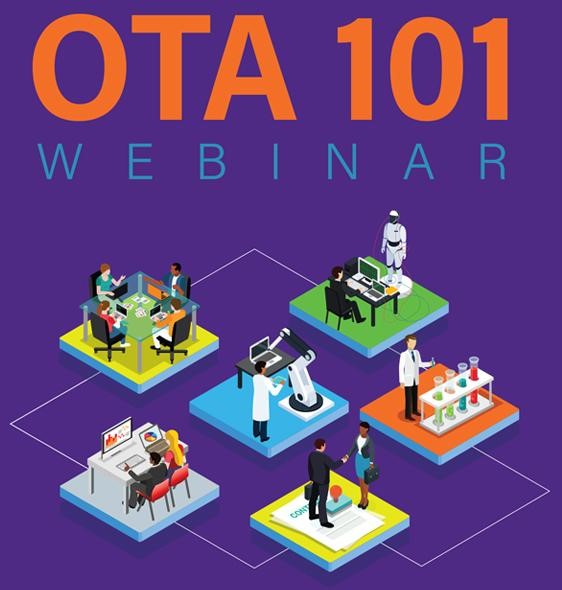
OTA 101 WEBINAR
You are invited to this free webinar to learn more about the world of OTAs. You’ll learn:
- The history and components of OTAs
- How the consortium model promotes collaboration among the government, nonprofits, organizations of all sizes, and academic institutions
- How to get involved and find opportunities for research and prototype development

